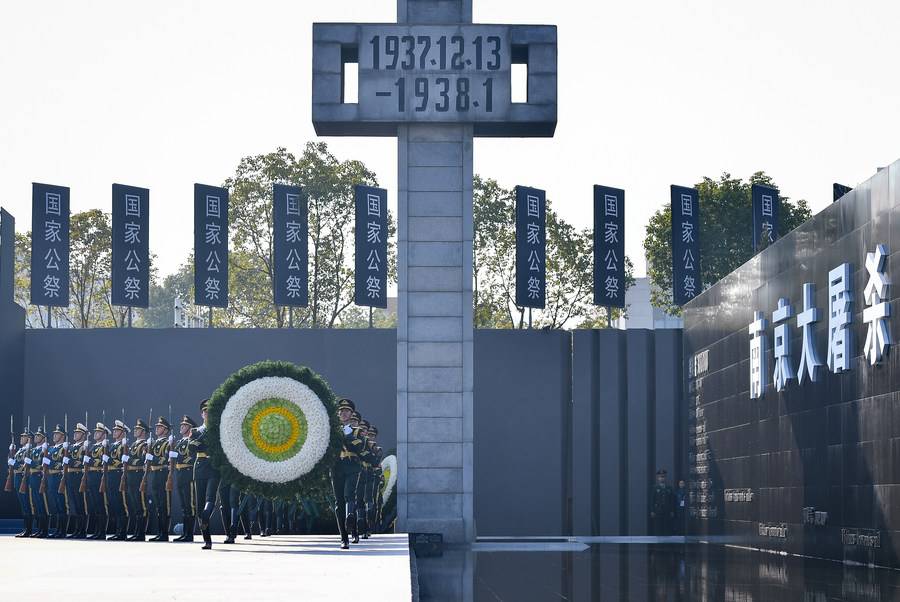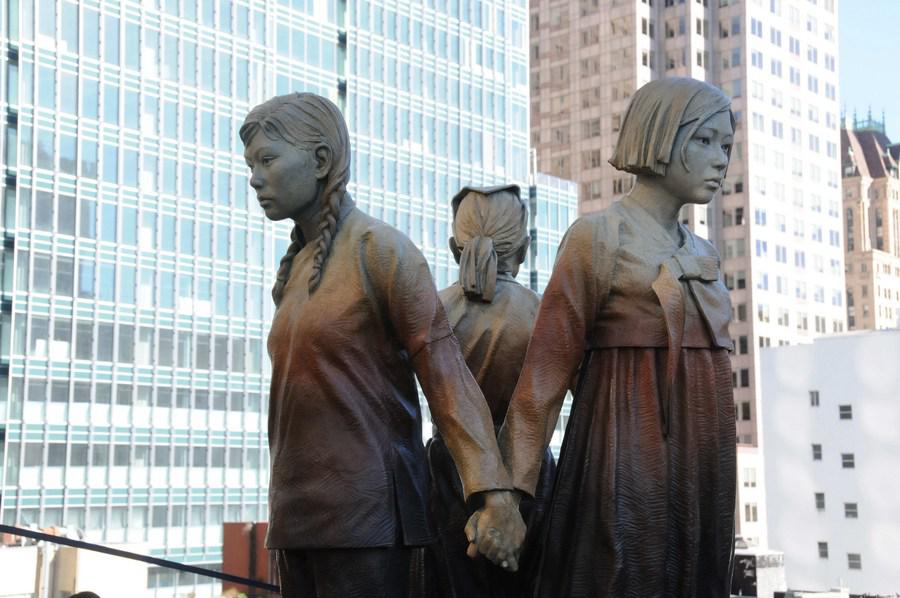Japan's notorious Yasukuni Shrine -- symbol of WWII militarism, aggression

Around 90 Japanese cross-party lawmakers visit the war-linked Yasukuni Shrine in Tokyo on April 21, 2017. (Xinhua/Ma Ping)
Visits and ritual offerings made in person or by proxy to the infamous Yasukuni Shrine by Japanese leaders, officials and lawmakers have consistently sparked strong criticism from and hurt the feelings of the people of China, South Korea and other countries brutalized by Japan during WWII.
TOKYO, Aug. 15 (Xinhua) -- Japan's notorious Yasukuni Shrine, which honors 14 convicted Class-A Japanese war criminals from World War II, has sparked strong condemnation from neighboring countries over the years.
Located in Chiyoda ward in central Tokyo, the shrine, open to the public 24 hours, is a symbol which reflects Japan's wrong attitude towards its history of aggression and sends a wrong message to the Japanese public about the country's heinous past war crimes.
Yasukuni Shrine, seen by neighboring countries as a symbol of Japan's past militarism, honors 2.5 million Japanese war dead, including 14 Class-A convicted war criminals in WWII along with its historically inaccurate museum.
It is a testament to Japan's past militarism and has long been a source of diplomatic frictions for Japan and its neighbors.

Photo taken on Dec. 13, 2019 shows the national memorial ceremony for the Nanjing Massacre victims at the Memorial Hall of the Victims of the Nanjing Massacre by Japanese Invaders in Nanjing, capital of east China's Jiangsu Province. (Xinhua/Li Xiang)
Japan brutally occupied many parts of Asia before and during WWII, causing untold suffering and death to hundreds of thousands of innocent victims.
Historians say hundreds of thousands of Asian women, mostly from China and the Korean Peninsula, were kidnapped, coerced or duped into sexual servitude for Japanese troops during WWII.
Apart from occupying neighboring countries during WWII, the Japanese army also conducted experiments on victims, many of whom were still alive when all sorts of acts of inhuman cruelty were committed against them.

A "comfort women" monument is seen at St. Mary Square in San Francisco, the United States, on Sept. 22, 2017. (Xinhua/Ma Dan)
There were numerous more heinous incidents carried out by the Japanese army that until this day have received far less coverage in textbooks, or in globally televised memorial services.
Visits and ritual offerings made in person or by proxy to the infamous Yasukuni Shrine by Japanese leaders, officials and lawmakers have consistently sparked strong criticism from and hurt the feelings of the people of China, South Korea and other countries brutalized by Japan during WWII.
Japanese Prime Minister Yoshihide Suga's predecessor, ex-prime minister Shinzo Abe, was the last prime minister to visit the controversial shrine in person in December 2013, an act for which he was strongly condemned by China and South Korea, as well as the United States, who voiced disappointment with Abe's decision at the time.
Abe sent a ritual offering to Yasukuni shrine during the country's spring and autumn festivals every year since he launched his administration in 2012.
Photos
Related Stories
- Japanese WWII germ warfare document released
- Japan marks 76th anniversary of WWII surrender with emperor expressing "deep remorse" over wartime atrocities
- China urges Japan to reflect on aggression history
- Wang Yi refutes attacks by U.S., Japan on China at EAS
- Chinese ambassador expresses hope Japan will implement positive China policies
Copyright © 2021 People's Daily Online. All Rights Reserved.










